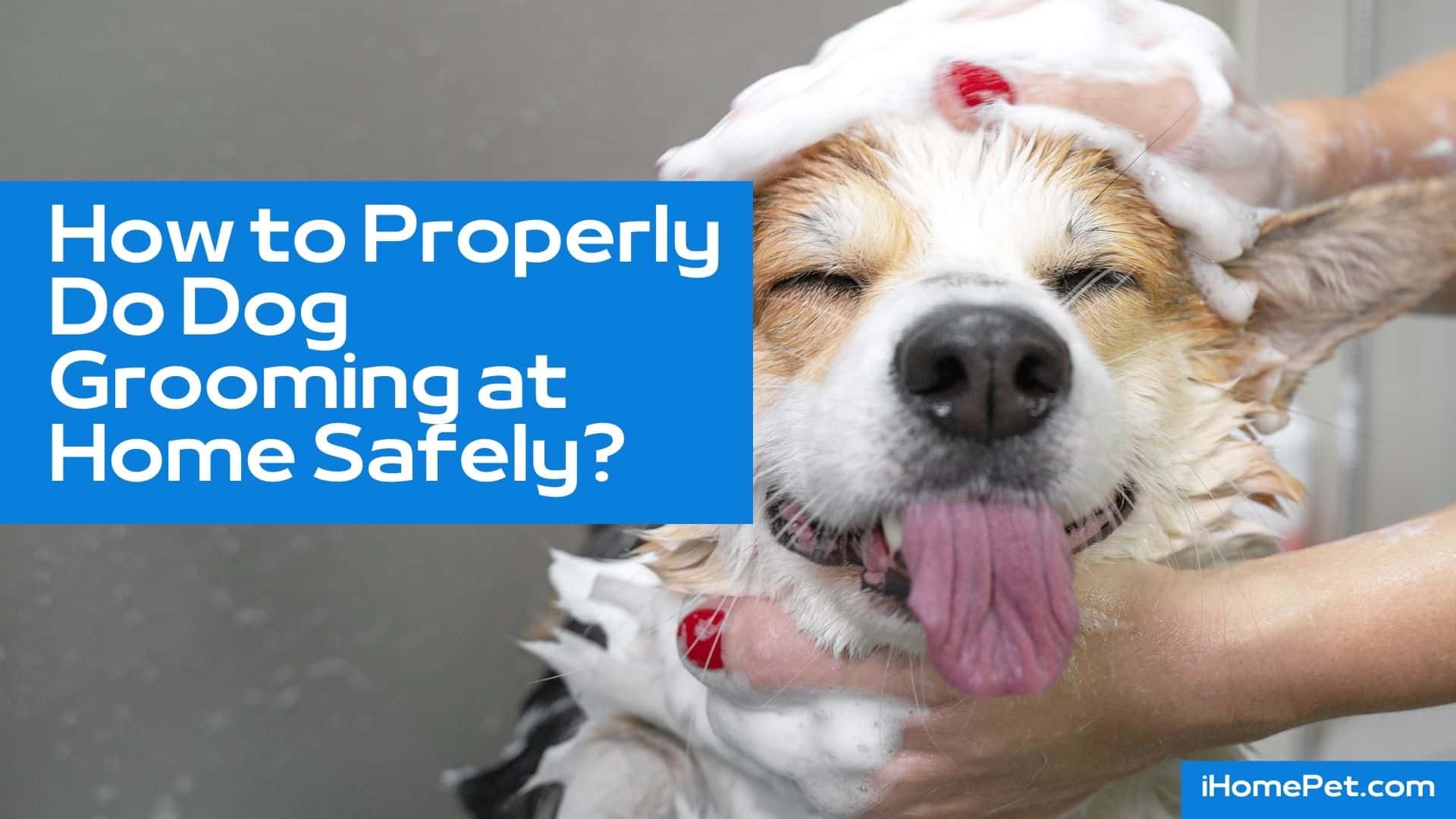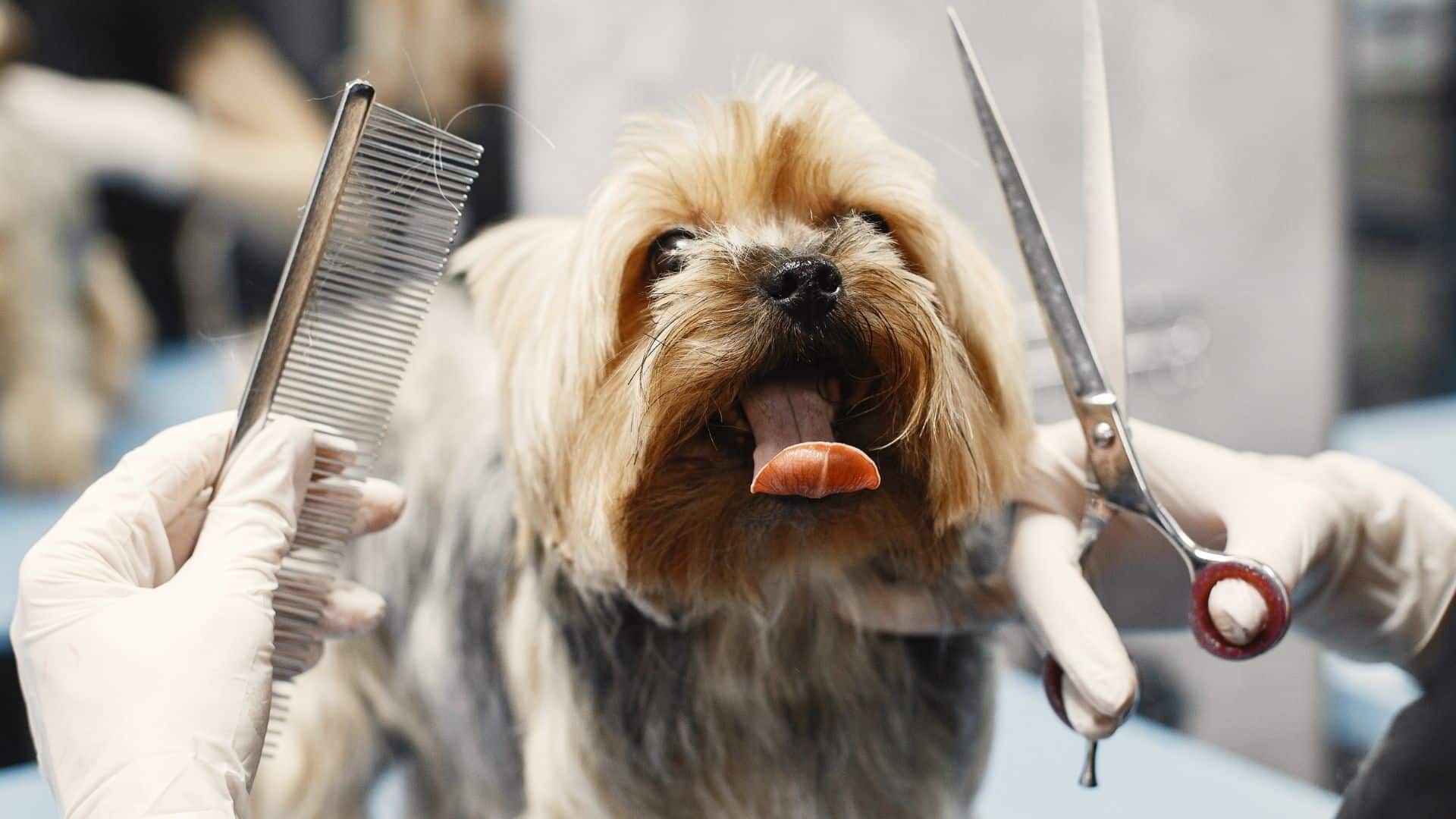When it comes to taking care of our furry friends, dog grooming plays a crucial role in their overall well-being. Did you know that regular grooming not only keeps your dog looking and smelling great, but it also helps maintain their health and happiness? From keeping their coats clean and free from mats to trimming their nails and cleaning their ears, grooming your pup’s hair at home is an essential task for every pet parent.
Grooming your dog’s hair at home has a long history, dating back to ancient times when humans first started domesticating dogs. Throughout the centuries, grooming practices have evolved, and today, there are a plethora of products and tools available to make the process easier and more efficient.
According to a recent survey, 70% of pet owners prefer grooming their dogs at home, mainly due to convenience and cost-effectiveness. By grooming your dog at home, you not only save money on professional grooming services but also strengthen the bond between you and your furry companion.
Looking to groom your beloved pet at home? Follow these simple steps for a professional-level grooming experience. First, gather all necessary supplies including dog shampoo, brushes, and clippers. Next, give your dog a thorough brush to remove any tangles or mats.
Then, carefully trim your pup’s nails using a dog-friendly nail clipper. After that, bathe your dog using warm water and a mild shampoo. Finally, dry your dog thoroughly and give them a treat for a job well done!
Keeping Your Dog Looking Sharp: DIY Grooming at Home

Grooming your dog is an essential part of their overall care. Not only does regular grooming help keep your furry friend looking their best, but it also promotes good health and hygiene. While professional dog grooming services are available, they can be expensive and time-consuming.
The good news is that you can groom your dog at home, saving both time and money. With a bit of knowledge, the right tools, and some patience, you can easily maintain your dog’s coat, nails, ears, and overall appearance in the comfort of your own home.
1. Preparing Your Dog for Grooming
Before you start grooming your puppy, it’s important to ensure that they are comfortable and relaxed. Here are a few steps to help prepare your dog for the process:
- Give your dog a chance to relieve themselves before starting
- Find a quiet and well-lit area to groom your dog
- Have treats and rewards on hand to keep your dog motivated and rewarded throughout the process
By following these steps, you can help create a positive grooming experience for your dog.
2. Brushing Your Dog’s Coat
Regular brushing is important for your pet’s coat health. Brushing not only removes loose hair, dirt, and debris but also helps distribute natural oils, which promote a healthy and shiny fur. Here’s a step-by-step guide to brushing your dog’s coat:
- Choose a brush that is suitable for your pet’s coat type (e.g., slicker brush for long-haired dogs, bristle brush for short-haired dogs)
- Start brushing from the top of your dog’s head, moving gently down their body
- Use long, sweeping motions and be mindful of any tangles or mats
- If you encounter tangles or mats, gently work through them using your fingers or a mat comb
- Pay special attention to areas prone to matting, such as the ears, underarms, and tail
- Reward your dog with treats and praise throughout the brushing process
- Longhaired dogs may need an EZ shed dog conditioner
Regular brushing not only keeps your dog’s coat looking tidy but also helps prevent skin issues and discomfort caused by tangled or matted hair.
3. Bathing Your Dog
Bathing is an important part of dog grooming, as it helps keep your dog’s skin clean and free from dirt, allergens, and parasites. Here’s how to give your dog a bath at home:
- Choose a dog shampoo that is specifically formulated for your dog’s coat type
- Prep your bathing area by placing a non-slip mat on the floor and gathering all necessary bathing supplies
- Thoroughly wet your dog’s coat using warm water
- Apply the baby shampoo, lather it gently, and massage it into your dog’s fur
- Rinse your dog thoroughly, ensuring that all shampoo is removed
- Use a towel to dry your dog, or a hairdryer on a low heat setting if your dog is comfortable with it
- Add a especial cream to your pet’s paws during grooming sessions
It’s important to note that some dogs may require more frequent baths depending on their breed, activity level, and overall hygiene. Consult your veterinarian for specific bathing recommendations for your dog.
4. Trimming Your Dog’s Nails
As pet parents, we want to get our dog’s nails trimmed regularly. Trimming nails helps prevent them from becoming too long and causing discomfort or potential injury.
Remove excess hair from your dog’s paws and keep their nails short. Keeping your pet’s nails at an appropriate length is important for their comfort and mobility. Here’s how to trim your pet’s nails:
- Have styptic powder or cornstarch on hand in case of any nail bleeding
- Hold your dog’s paw gently but firmly, and carefully trim the tip of each nail
- Be cautious not to cut into the quick, which is a sensitive area that is prone to bleeding
- If you accidentally cut into the quick and your dog’s nail bleeds, apply styptic powder or cornstarch to stop the bleeding
- Reward your dog with treats and praise throughout the nail trimming process
If you are unsure about trimming your dog’s nails, consult a professional groomer or veterinarian for guidance.
5. Cleaning Your Dog’s Ears
Cleaning your dog’s ears helps prevent infection, remove excess wax, and maintain overall ear health. Follow these steps to clean your pup’s ears:
- Choose a veterinarian-recommended ear cleaning solution that is safe for dogs
- Gently lift your dog’s ear flap and fill the ear canal with the cleaning solution
- Massage the base of the ear for about 30 seconds to loosen any debris
- Allow your dog to shake their head to help dislodge any loosened debris
- Use a soft cloth or cotton ball to wipe away any visible dirt or excess solution
- Avoid inserting cotton swabs or any sharp objects into your dog’s ear
If you notice any signs of redness, inflammation, or a foul odor in your pooch’s ears, consult your veterinarian as these may indicate an underlying ear infection.
6. Making Regular Vet Check-Ups a Priority
While grooming your furry friend is a necessity, it’s equally essential to schedule regular veterinary check-ups. Whether it’s for vaccinations, dental care, or overall health assessments, regular vet visits help ensure that your dog is in good health and catch any potential issues early on. Follow your veterinarian’s recommendations for check-up frequency based on your dog’s age, breed, and specific needs.
7. The Benefits of Grooming Your Dog
Grooming your dog offers several benefits, including:
- Cost savings compared to professional services
- Avoidance of stressful travel to and from the dog groomer
- Opportunity for bonding and trust-building with your dog
- A more comfortable and familiar environment for your dog
- You can protect your dog’s eyes and your dog’s teeth
By taking the time to do it yourself, you can provide them with personalized care and attention while saving time and money.
Frequently Asked Questions

Dog scooting may be a reflection of an underlying medical issue or discomfort. It could indicate problems such as anal gland impaction, allergies, or even gastrointestinal parasites.
Many dogs will need a thorough examination and possibly some diagnostic tests to identify the specific problem causing the scooting. Treatment options may include medication, dietary changes, or even surgery, depending on the underlying issue. You can prevent ear infections by adding cotton balls to your pet’s ears.
1. How often should I groom my dog ?
How often you should groom your pooch depends on their dog breed and overall health. Long-haired breeds typically require more frequent grooming, while short-haired breeds may need less frequent grooming.
As a general guideline, most dogs benefit from a thorough brushing at least once a week to remove loose hair and prevent matting. Bathing can be done every 4-8 weeks, or as needed if your dog gets dirty or smelly. Remember to trim their nails regularly and clean their ears as well.
Grooming is also a great opportunity to check for any skin issues, fleas, or ticks. If you notice any abnormalities, it’s best to consult with a veterinarian. Ultimately, the frequency of grooming will depend on your dog’s specific needs, so it’s essential to observe their hygiene regularly.
2. What tools do I need for dog grooming?
Having the right devices for dog grooming is essential to ensure a successful and safe grooming session. Here are some basic grooming tools you’ll need:
- Brush or comb
- Dog shampoo
- Dog nail clippers or grinder
- Nail trimmers
- Paw pads
- Scissors or clippers
- Toothbrush and toothpaste formulated for dogs
There are also specialized tools available for specific coat types, such as deshedding tools or dematting combs. It’s important to choose tools that are appropriate for your dog’s breed. Invest in high-quality tools to make grooming easier and more comfortable for both you and your beloved pet.
Dogs with dark nails are often difficult to trim because it is hard to see the quick, which is the sensitive part of the nail. Some dog owners prefer to have their dogs’ nails professionally trimmed to avoid any potential injuries.
Last Updated on 16/03/2025 by Karen Snow
Hi! I’m Karen and a certified dog lover. As a freelance writer and blogger, I do my best to squeeze in some time with my dogs, learning more about the way they act and how I can make sure that they continue to stay well-cared for by yours truly.
My dogs have helped me through a lot, and this is my way of giving back to them! Besides animals, I also love to travel and cook, having explored my country’s restaurants and unique places. Follow me as I show you all the amazing tips and bits of information I learn along the way about our furry friends!
